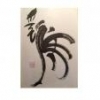-
Posts
856 -
Joined
-
Last visited
-
Days Won
10
mecox last won the day on May 7
mecox had the most liked content!


mecox replied to KKCook's topic in Translation Assistance

mecox replied to KKCook's topic in Translation Assistance

mecox replied to KKCook's topic in Translation Assistance

mecox replied to I_Kendo_It's topic in Military Swords of Japan

mecox replied to KenandCantrell's topic in Military Swords of Japan

